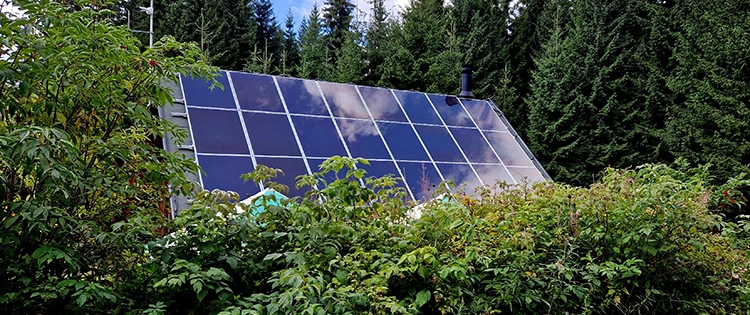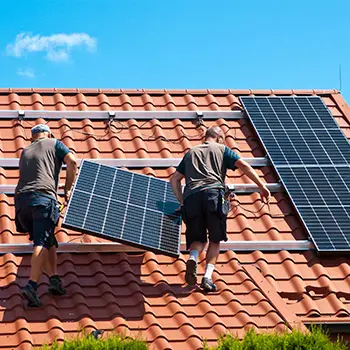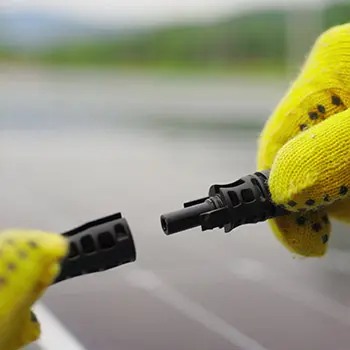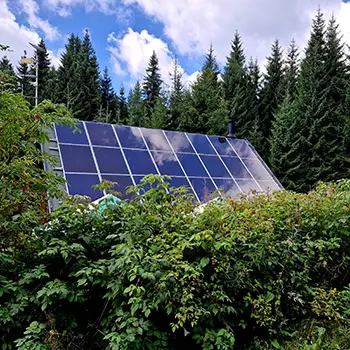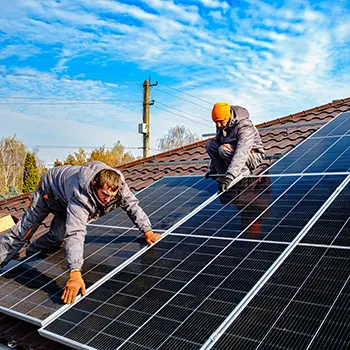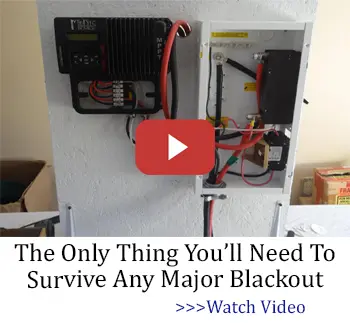Installing solar panels is a smart choice. It saves you money and helps the environment. But be careful – there are some common mistakes that could kill you.
I’ll explain a few blunders to avoid when setting up your solar system. Following these tips will ensure you get the full benefits without any death risks or headaches down the road.
The first mistake is…
Disregarding Electrical Hazards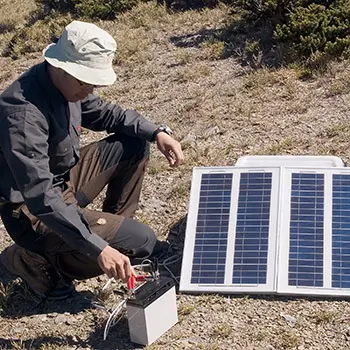
Imagine this horrifying scenario: You’re wiring your new solar panels when your sweaty palm brushes against an exposed, live electrical cable.
The massive jolt of electricity courses through your body, instantly stopping your heart. A tragic but avoidable outcome from disregarding basic electrical safety.
When working with solar systems that involve both AC and DC wiring, you must treat every cable as a potential killer until proven otherwise.
Shut off circuits completely and test with a voltmeter before handling any wiring. Wear properly insulated gloves, clothing, and non-conductive shoes. Only use tools specifically designed for electrical work. Better yet, get professional training on solar photovoltaic wiring best practices.
Related: 5 Solar-Powered Items That Actually Make Sense To Keep Handy
Failing to Secure Panels
During a harsh storm, your shiny new solar array gets ripped from its mount by fierce winds. Instead of generating clean power, the heavy glass panels become destructive projectiles, demolishing your greenhouse, rain barrels, or other homestead structures. You could even be struck in this worst-case scenario.
This nightmare highlights the critical importance of properly calculated wind loads and secure panel mounting hardware. Major solar installers use proven techniques like:
- Elevated racks anchored into the roof’s trusses
- Ballast footing secured with heavy concrete weights
- Wind deflectors on tall array configurations
- Reinforced racks for areas with hurricane potential
Research local wind speed requirements and opt for sturdy mounting solutions that exceed standards. Don’t cut corners that could put your safety at risk.
Neglecting Roof Integrity
Rooftop solar panels add considerable weight load that your existing roof may not be equipped to handle, especially on older homestead structures.
If you install an array on a compromised roof, the section could buckle and completely give out under the added weight. Now you’re trapped under a heavy, sharp pile of solar glass and splintered wood.
Before mounting anything on your roof, have a professional roofer or structural engineer conduct a full inspection and load calculation specific to your solar plans.
You may need to reinforce the underlying structure with additional support. On particularly aged or deteriorating roofs, it’s wisest to have it completely replaced first before installing weighty panels on top.
Working at Dangerous Heights
Elevated heights are inherent to most rooftop solar installations, increasing the potential for devastating falls.
Plummeting just 10-15 feet can result in permanent paralysis, traumatic brain injuries, or even death in the worst cases. No amount of solar savings justifies putting your life on the line.
If you choose DIY installation, always use properly secured ladders and never work alone. Wear non-slip shoes with excellent traction. Consider investing in a roof safety harness that attaches to sturdy anchor points.
Walk carefully and avoid slippery surfaces like ice, moss, or debris. For complex installations spanning multiple roof planes, hire professional installers who have fall safety equipment like bucket lifts.
Related: 9 Little Tricks To Save Electricity At Home Big Time
Improper Wiring & Grounding
Your solar system might initially appear functional, giving you a sense of false security. However, due to shoddy wiring or inadequate grounding, it develops an internal electrical fault.
Now you have a ticking time bomb in the form of an electrical fire risk that could quickly engulf your entire homestead.
Wiring safety should be the top priority for any DIY solar project. Study the latest NEC (National Electric Code) guidelines regarding proper wire sizing, connectors, and junction box requirements.
Use only solar cables rated for outdoor photovoltaic circuits. Most critically, ensure every conductive piece of equipment has a complete grounding path back to your homestead’s grounding electrode system. A yearly inspection by a certified electrician is also highly advisable.
Skimping on Components
To cut up-front costs, you settle for bargain-priced solar panels, inverters, racking, and other components from unfamiliar overseas manufacturers.
But a few years down the road, these cheap components fail due to subpar engineering or quality control. Now your system sits useless while you empty your wallets for replacements.
The Takeaway: Invest in quality, reputable components from the start and save yourself the headache of premature failures.
Extensive homesteader solar forums can point you to the most reliable and durable manufacturers. Spending a bit more here could mean decades of trouble-free performance. Don’t risk your safety or entire investment by skimping.
Ignoring Local Codes & Permits
Eager to get your solar array up and running, you skip the permitting process and installation guidelines set by your local authorities and utility company.
But when an electrical inspector inevitably discovers your off-grid solar setup violates safety codes, you face hefty penalties and fines. Lawsuits and having to completely redo the installation are worst-case consequences.
Before lifting a finger, research all local permitting rules, connection requirements, and safety code specifics that pertain to solar photovoltaic systems in your area.
Many utilities and municipalities offer guidelines to walk homeowners through getting full approval. Impatience here could cost you more financially and developmentally than doing it the proper, legal way from the start.
Related: Living In A HOA Zone: Can I Be Self-Sufficient?
The Safest Installation is a Team Effort
The benefits of renewable solar must be weighed against the risks of improper DIY installation. Evaluate your skills, experience, and safety setup realistically before deciding to tackle this major project solo:
- Are you well-versed in electrical theory and building codes?
- Do you have all the required personal protective equipment?
- Can you ensure secure, code-compliant mounting and wiring?
- What is your contingency plan if something goes wrong?
For complex rooftop systems or if you lack professional construction experience, it’s wisest to hire certified solar installers. They have the equipment, training, insurance, and expertise to get it done safely and correctly.
If you do opt for DIY installation, never work alone and have backup safety buddies on hand. Research thoroughly, double-check your work, and bring in third-party inspectors if needed.
Purchase quality components from trusted suppliers, not bargain e-sellers. And above all, prioritize safety over cutting corners – your life is worth far more than temporary savings.
Final Precautions
Harvesting sunlight for your self-sufficient homestead can be incredibly rewarding, but only when done knowledgeably and with the utmost regard for safety hazards. Whether you take the DIY route or hire professional installers, implement these final layers of protection:
- Protective Gear: Wear insulated gloves, protective eyewear, hard hats, and other PPE.
- Training: Seek accredited solar installation courses or electrician training programs.
- Interconnection Rules: Consult your utility on requirements for grid-connected systems.
- Ongoing Maintenance: Schedule routine inspections and cleanings to stay code-compliant.
Follow all protocols, leverage available resources, and always prioritize safety over shortcuts. When installed correctly, your solar system will provide decades of clean, renewable power – along with peace of mind from avoiding fatal installation nightmares.
Modular Backyard Power Plant Review
Do You Make These Fatal Mistakes in a Crisis? (Video)
Plant This Vegetable Once and Harvest it For 30+ Years

